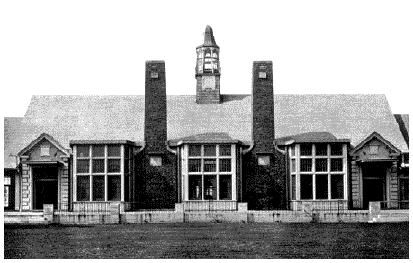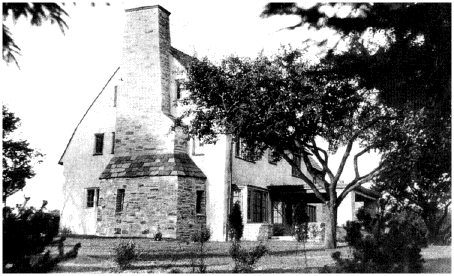Of Howard
Van Doren
Shaw
Virginia A. Greene
(Chicago Review Press)
- The Early Years, from 1894 - 1904, in which Shaw specialized in industrial buildings and private homes, and, in general, the "Arts and Crafts Movement;"
- Mid-Career, 1905 - 1915, country houses --- more than forty-five in all --- for the gentry in the suburbs of Chicago, and in Wisconsin and through the Midwest; along with warehouses, high-rises, and various churches;
- What the author calls "The Golden Years," 1916 - 1926, including plans for worker housing (Marktown), apartment buildings, churches, collegiate buildings, and several commissions for the Art Institute of Chicago.
For those of us who love turn-of-the century architecture, it is a pleasure to run across an establishment designer like Shaw, because, most of the time, whenever we read the ominous words --- "building demolished" --- we grieve for an American architectural past of leisure and luxury now, sadly, destroyed.
However, in the case of Shaw, we can do nothing but cheer. For this man had the magic ability to create some of the most grotesque, inchoate, ill-thought-out, ludicrous, bombastic --- and downright vulgar --- buildings in the history of mid-west American architecture. He was the godzilla of the 1900s building boom. In simple matters of scale and design, his structures were always out of kilter (and not a little out of kilter).
He would mix, willy-nilly, with no sense whatsoever, gables, Doric columns, medieval motifs, hipped roofs, and --- what he called "squat columns" --- which look just like squat columns. What should have been graceful was merely gaudy. With his mystical lack of understanding of scale, spacing, and lines Shaw was able to develop a parody of aesthetics.
Note, for example, [Fig 1, above] the Hugh Johnson McBirney "House of the Four Winds." The authors say,
- The plan uses a most incredible axial relationship of inside to outside. Especially notable are the enfilade of rooms and cross-axial views to the landscape, the telescoping sloped hip roofs, and the unique second-floor screened dormer.
Note also the weird conjunctions of ill-placed vertical lines, non sequitur extensions and random extrusions, jammed together with a monster chimney scaled to destroy any artistic sense, including fake-oriental Chinese decorations across the dormer, and the pièce de résistance --- sloping hip roofs to create what can only be considered a droopy joke.
 Even more peculiar is the Homewood Country Club, [see Fig. 2, left] --- utilizing a vulgar cupola, poorly scaled in relationship to the whole, two truly garish chimneys, a Palladian facade, and quoined pedimented entrances.
Even more peculiar is the Homewood Country Club, [see Fig. 2, left] --- utilizing a vulgar cupola, poorly scaled in relationship to the whole, two truly garish chimneys, a Palladian facade, and quoined pedimented entrances.
Great architecture --- or even good architecture --- asks only that the necessities (door, window, roof, wall) bear some relationship to each other. For Shaw, architecture must have been pick-up-sticks: "Here's a nice facade, so let's start with that. And there's a cupola I've never used before, and how about some quoined entrances --- I like the sound of that word, so why don't I throw a couple of them over there." When he gets through, it looks like the baby's breakfast ... returned, on the bib.
As we leaf through The Architecture of Howard Van Doren Shaw, with its more than 150 pages of generally terrible reproductions, along with the lavish praise of the author --- we're wondering if it's a put on. Is it possible that Shaw never existed, and by means of computers, Ms. Greene created --- whole-cloth --- "photographs" of buildings that never existed, a style that never existed, an architect who never existed? If so, this is one of the most delicious jokes of the decade.
The book tells us that Shaw received the highest honor of the American Institute of Architects, the Gold Medal, in 1926. If, indeed, all this isn't a total fabrication --- that tells you a great deal --- too much --- about the tastes of the AIA.
